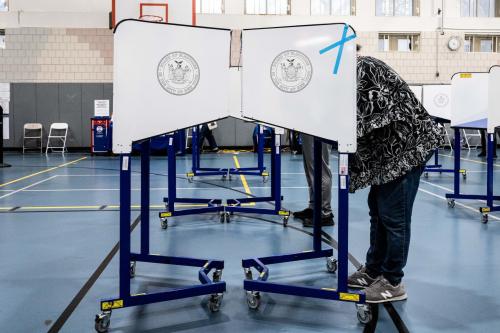This report is part of the Series on Financial Markets and Regulation and was produced by the Brookings Center on Regulation and Markets.
This report addresses the trend of for-profit colleges going exclusively online or contracting with non-profit (mostly public) colleges to run their online programs. Using results from focus groups of for-profit student borrowers, Robin Howarth and Lisa Stifler explore the risks that this rapid shift entails for students already vulnerable to poor outcomes. The Department of Education is seeking to weaken accountability for distance education (online) providers that enroll students across wide geographies. This approach will increase risks for students and the federal student loan program. The Department of Education should increase oversight, and states should also act to protect consumers that are enrolled in online college programs, particularly those that are for-profit, irrespective of the home state of the online program provider.
Summary of Findings
- For-profits colleges enroll an outsized share of students that take only online courses: 22 percent of online-only undergraduate students and 27 percent of all online-only graduate students. (For-profit colleges enroll only 5.4 percent of all undergraduates and 8.9 percent of all graduates.)
- The online-only student enrollments of for-profit colleges are 80 percent out-of-state for undergraduates and 85 percent out-of-state for graduates. Oversight and accountability for distance education offered across multiple state lines is both inadequate and in flux, leaving students vulnerable to substandard educational offerings.
- Like for-profit enrollment generally, primarily online for-profit institutions focus their marketing and recruiting on African Americans, women, and adult (25 or older) students as reflected in the outsized enrollment shares of these students.
- In contrast to the high enrollment share of African Americans in for-profit online institutions, Latinos and whites are underrepresented. Latinos in particular have low enrollment shares in distance education institutions overall, irrespective of whether these institutions are for-profit, private non-profit, or public.
- A nascent literature shows that outcomes for online-only for-profit student are particularly poor in terms of completion and earnings after leaving school.
- CRL’s focus group research shows that students that enroll in for-profit online programs are attracted by easy enrollment and assistance in procuring student financial aid but are subsequently disappointed with the poor quality of education provided. Their hopes of improved financial stability through the pursuit of higher education meet head on with disappointing labor market outcomes and unsustainable levels of student debt.
The authors did not receive financial support from any firm or person for this article or from any firm or person with a financial or political interest in this article. They are currently not officers, directors, or board members of any organization with a financial or political interest in this article.



